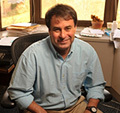
I was a grownup — a forebear with descendants of my own — before I knew I wasn’t very Irish (if Irish at all). It was a bit of a blow to my identity because I had been raised to think of myself as Irish. My mother attributed my quick temper and brooding disposition to my Irish blood as well as my wistfully romantic nature and appetite for poetry and make-believe.
Her mother was a Finnegan, her father a McPhee, and my father’s side of things had simply been rural Southerner for as long as anyone could remember. Not much to latch onto there (or so my mother thought) . So we were devotedly Irish-Catholic in alien north Louisiana, and Notre Dame was our place, our city on the hill, our champion.
It’s hard to imagine a university in America that has aligned itself with a foreign country as closely as Notre Dame has identified with Ireland. Despite being started by a French priest of a French religious order, L’Université de Notre Dame du Lac has been the home of the Fighting Irish for decades.
Its athletic teams have embodied that fighting spirit — scrappy, defiant, belligerent underdogs with gritty flair for valiant efforts and dramatic victories. The shamrocks and the wearing of the green may suggest the playful ornamentations of things Irish, but turning the demeaning image of the leprechaun inside out as a symbol of Irish pride, liberation and triumph stands as a fist against the prejudice and power of age-old oppressors.
I can still remember how good it felt at 17 to join — with full-throated zest — the roaring chant, “Here come the I-rish!” as Notre Dame marched down the field against No. 1 Texas in the 1970 Cotton Bowl. A full-size Irish flag soon hung in my bedroom.
Not only is today’s student body characteristically Irish but the University is a distinguished international leader in Irish studies, with world-class scholars applying their intellectual spirit to the culture’s literature, language, history, music and politics. A football game in Dublin this September — the jewel in a jampacked agenda of academic and social affairs — attracted almost 40,000 Americans to the city, a stunning demonstration of the bonds between Notre Dame and its adopted homeland.
Many of us think of Ireland as the place left behind. The truth is, we all come from somewhere, and those places do much to tell us who we are and are instrumental in how we understand our life stories. Our geography helps define us — whether we trace our roots to Inishark, the Gold Coast, Rosebud or even planet Earth (as some articles herein suggest).
As for me and my Irish ancestry? More recent genealogical investigations indicate that the McPhee is more Scottish than Irish and the Finnegan was a second husband, one who came along after the biological father had passed through and disappeared. This crushing discovery of being non-Irish has had me adjusting to myself ever since.
Kerry Temple is the editor of this magazine. Email him at ktemple@nd.edu.